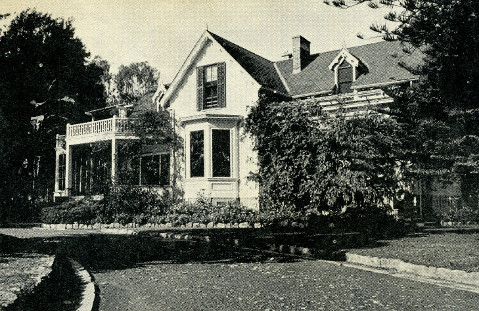The Stows of Stow House
Tragedy and Innovation Marked Their Thousand-Acre Ranch and Its Orchards

The house at 304 North Los Carneros Road, built by Sherman P. Stow in 1872-73, was the home of one of the Goleta Valley’s most prominent families.
The paterfamilias of this family was William Whitney Stow. A native of New York, Stow practiced law in that state until coming to California in 1852. He farmed in Santa Cruz County, got involved in politics, served two terms in the State Assembly, and became speaker of that body. In 1856, he opened a law office in San Francisco and eventually became chief counsel for the Southern Pacific Railroad. He also served eight years as San Francisco’s park commissioner and was instrumental in developing Golden Gate Park. Stow Lake is named in his honor.

W. W. Stow decided to buy a ranch for his son, Sherman, and turned for advice to W. W. Hollister, whom he had met while serving in the Assembly. Hollister owned the Glen Annie Ranch in the Goleta Valley and urged Stow to seek property there. In 1872, Stow purchased 1,043 acres from Rosa Senter, the remarried widow of Daniel Hill, for $28,600. Sherman then turned to the task of developing a farm, while his father supplied the labor, the equipment, and an endless stream of advice and directives. W. W. Stow also supplied the redwood lumber, which was floated ashore for the ranch house. The area was already known as La Patera (The Duck Pond) and this became the name of the ranch.
Sherman began to lay out the orchards, planting some 9,700 almond and 3,000 walnut trees. In 1875, he planted 3,000 lemon trees; one of the first commercial plantings of citrus in California. The latter produced profitably until the late 1930s. Sherman also developed the ranch’s irrigation system, funneling water down from the mountain streams and springs into a pond (now Lake Los Carneros) where it was stored until needed during the dry season.
Success in business came with personal tragedy. Sherman P. Stow died from a stroke in 1907. His eldest son, Sherman H., took up management of La Patera, but he was felled by appendicitis in 1915, when only 39. The reins of management now fell into the hands of Edgar, a brother of Sherman H. Edgar who proved to be a most innovative rancher. He brought in lemon plantings from Florida, developed a new lemon strain resistant to disease, ran soil tests, developed new insecticides, and experimented with new root stocks. Many of his innovations became standard practice in the citrus industry.
Edgar also served in the State Assembly and the State Senate; he was a key figure in establishing the state’s community college system and in opposing sales tax on essentials, such as food. During World War I, he served as food administrator for Santa Barbara County and later served as an officer of the Johnston Fruit Company, one of the largest packing companies in this area. When Edgar died in 1949, a nephew, Garrett Van Horne, took over the ranch.
In 1967 the family sold the southern half of the ranch to developers but retained ownership of Stow House. The county then bought the land upon which the house sat, and the family in turn donated the house to the county. Today Stow House and its surrounding buildings are operated as a museum complex, and it serves as headquarters for the Goleta Valley Historical Society.



